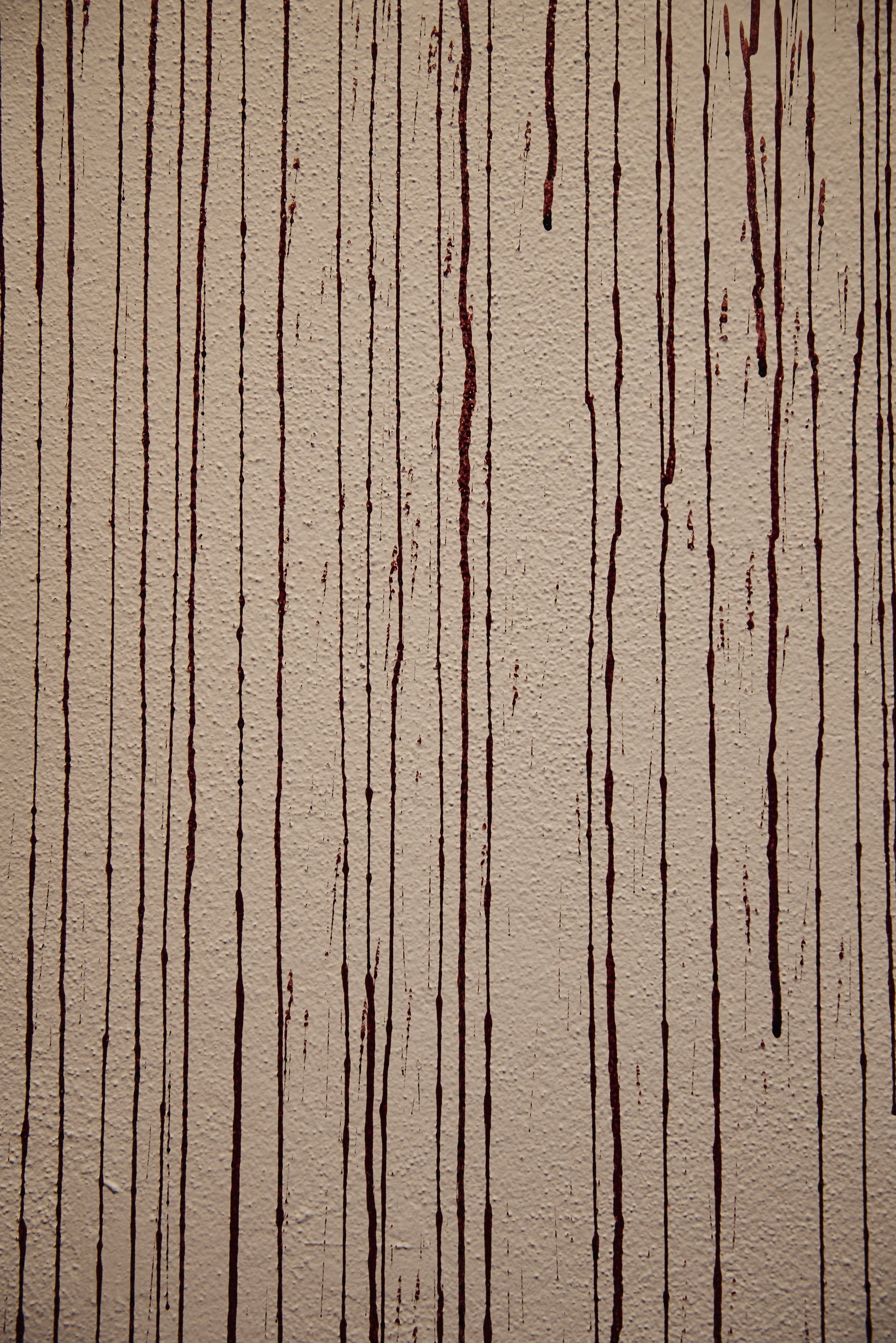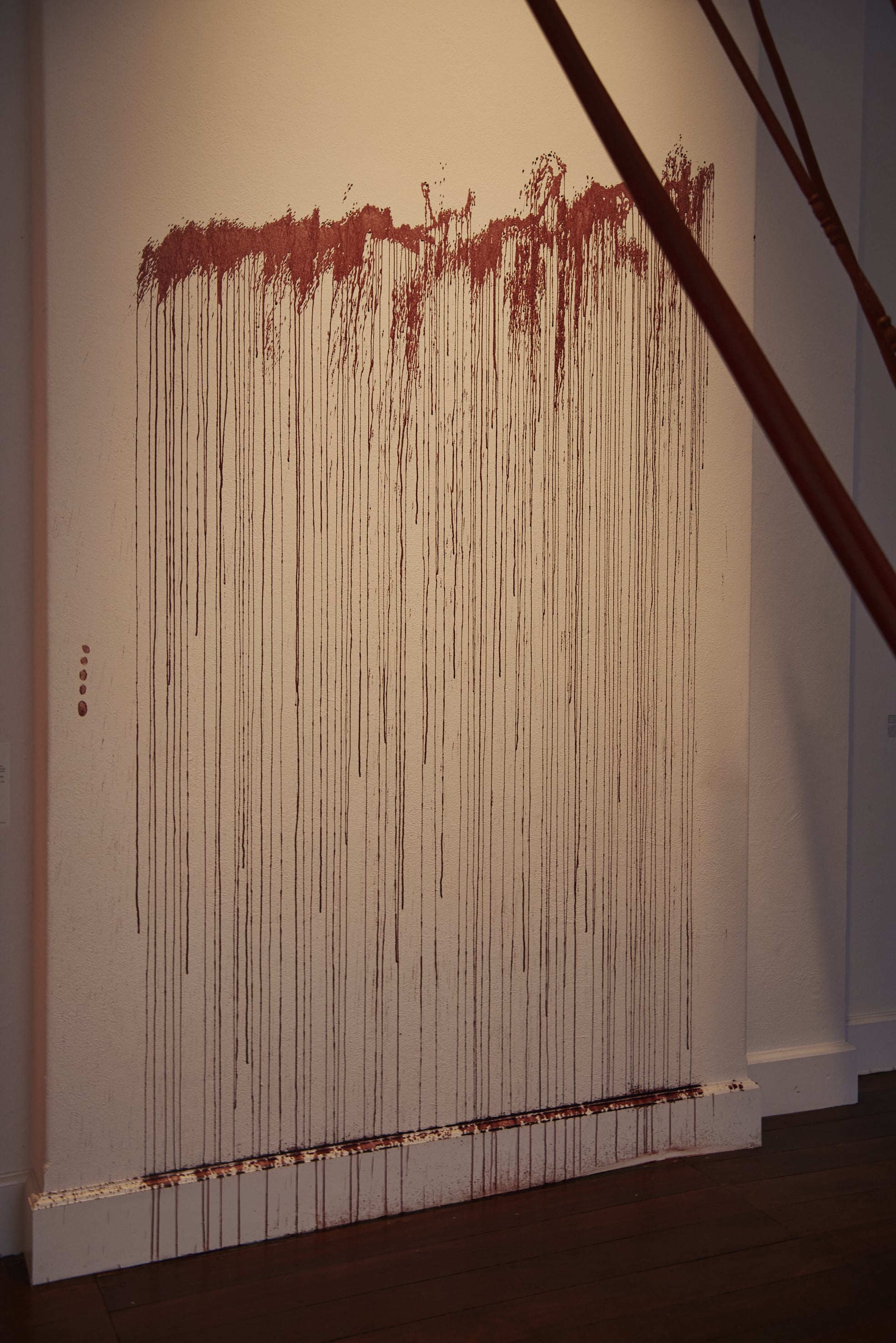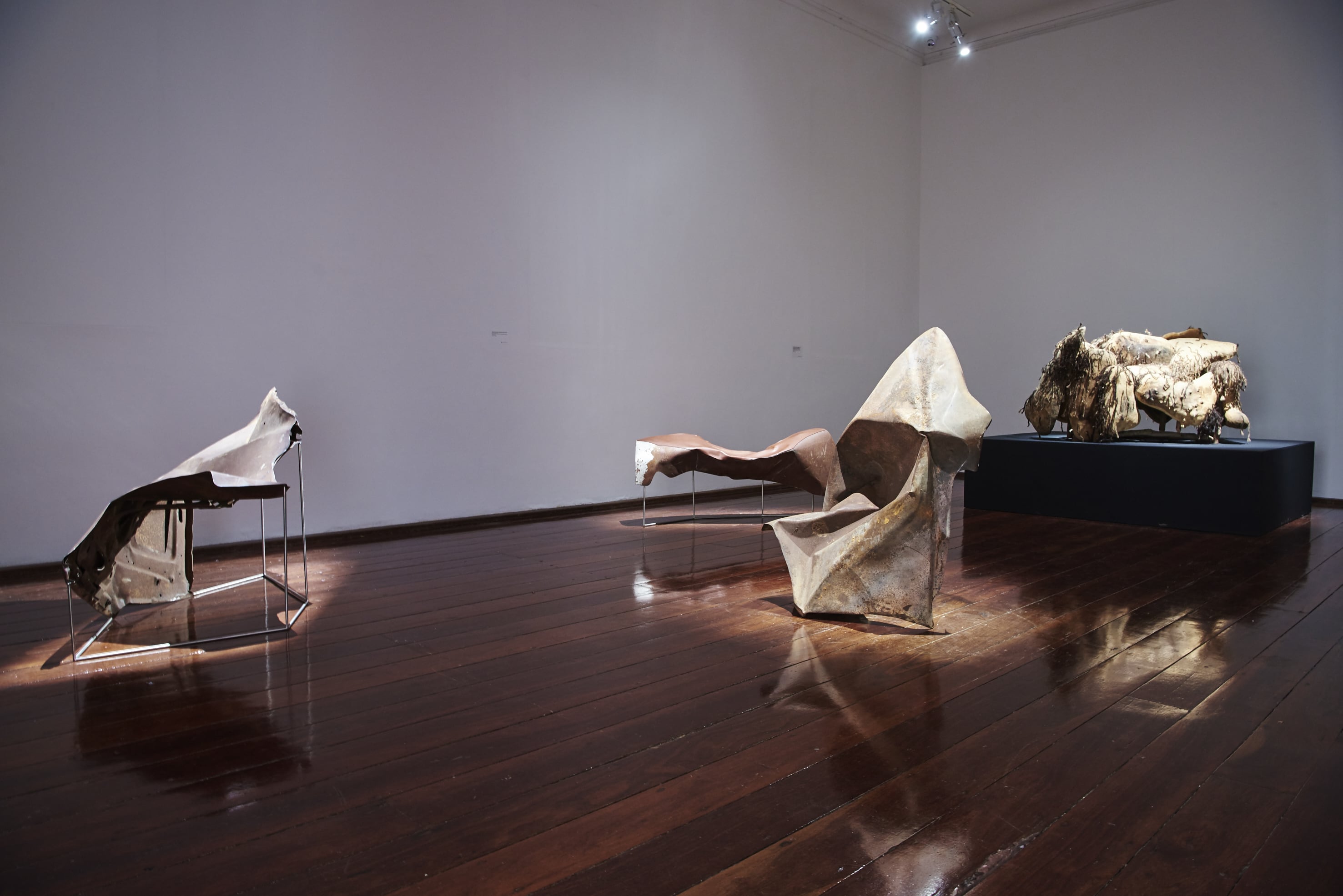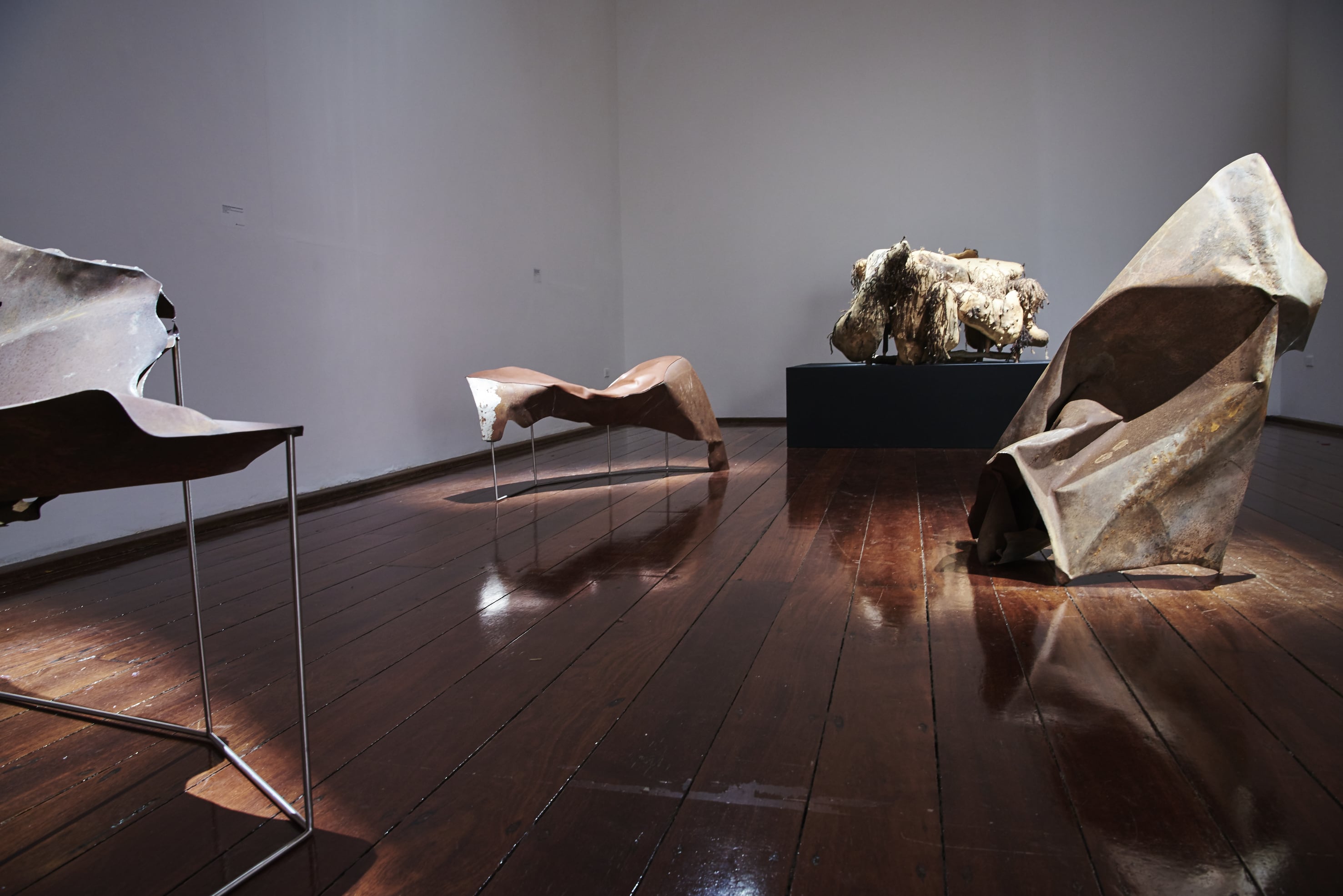



Art Centres & Artists:
Baluk Arts (VIC): Kirsty Bell, Dominic Bramall-White, Gillian Garvie, Glenn Foster, Tallara Gray, Robert Kelly, Beverely Meldrum, Rebecca Robinson, Nanette Shaw, Douglas Smith, Lisa Waup and Shane Wright WITH Neil Aldum (WA).
Buku-Larrnggay Mulka Arts Centre (NT): Ishmael Marika WITH Curtis Taylor (WA). Spears made by Wilson Mandijalu, Wanyubi Marika, Desmond Taylor, Wokka Taylor, Yilpir Wanamni.
Mangkaja Arts (WA): Elsie Dickens, Yangkarni Penny K-Lyons, Myarn Lawford, Rita Minga, Eva Nargoodah, Illium Nargoodah, Johnny Nargoodah, Gene Tighe and Duane Shaw WITH Trent Jansen (NSW).
Martumili Artists (WA): Kumpaya Girgiba, Rachel Handley, Thelma Judson and Nancy Karnu Taylor WITH Claire Healy & Sean Cordeiro (NSW).
Papulankutja Artists (WA): Lynette Brown, Nora Davidson, Pamela Hogan, Freda Lane, Angilyiya Mitchell, Anawari Mitchell and Jennifer Mitchell WITH Louise Haselton (SA).
Warakurna Artists (WA): Nancy Carnegie Tjungupi, Lena Dawson Palitja, Andrea Giles, Norma Giles, Sheila Giles, Trudy Holland, Dianne Holland, Joyce James, Clarabelle Kendae, Francine Newberry, Nancy Nyanyarna Jackson, Polly Pawuya Butler-Jackson, Eunice Porter Yunurupa, Kristabell Porter, Delilah Shepherd, Dwayne Shepherd, Katherine Shepherd, Selina Shepherd, Dallas Smythe, Noreen Smythe, Dorothy Ward, Rocky William Porter, Billy Willy, Tracy Yates, Judith Yinyika Chambers and the children of Warakurna WITH Tony Albert (NSW/QLD).
Curator: Erin Coates
At a panel discussing In Cahoots, the latest cross-cultural, collaborative exhibition from the Fremantle Arts Centre, Curtis Taylor was asked whether he was happy with the way his installation with Ishmael Marika had worked out. There was an awkward pause before Taylor admitted that,
“I really wanted to fuck things up--the Western Desert and Arnhem Land, their artefacts, culture, everything, but when I went to Arnhem Land I was held back by respect for moieties, songlines, and while I had the approval of my immediate family there, Ishmael's family, I felt I didn't have the approval of the whole community there.
On the wall of their installation of spears, sand and televisions, Taylor sprayed his own blood from an artery used in ritual bloodletting in the Western Desert. Such cutting and bleeding would be a radical performance if someone like Mike Parr did it. But as a Western Desert artist, Taylor is not radical but intensely traditional. He cannot, even with such an extreme, dangerous and bloody gesture, fuck things up, because he is defined by this tradition, by his place as an Aboriginal artist.
In Cahoots is a show of collaborations of all kinds, but is also full of these kinds of returns, illuminating the Catch 22 of Australian artists who cannot cross the racial divide. As Vernon Ah Kee made clear when also speaking on the panel, inequality lies behind the relations of collaborators and communities. This is not a new critique, and one that is much rehearsed internationally, where accusations of inequality have dogged socially engaged artists.
So that in this show Tony Albert collaborates with the children of Warakurna to make two series of photographs. In one they dress and perform as Star Wars characters, in another as superheros. Here Princess Leia wears raffia hair, there a caped crusader is silhouetted against the sky of the Australian desert. And Trent Jensen collaborates with the guys in the Mangkaja workshop in Fitzroy Crossing. Folded car body parts and a surreal, potato-like monstrosity make for a fantastic installation, but one that has Jansen's brutal austerity written all over it. Jansen admitted as much at the panel, but said that he saw the collaboration as only one part of a longer, unfolding relationship, in which Illiam and Johnny Nargoodah had already been to visit and work with him in Wollongong.
So it is that collaboration, 'the C word' as curator Erin Coates came to call it while working on this show, is rarely a case of equality. But as Coates' previous collaborative commissions make clear, they are also more than simply a search for common ground, and for equality. Take her first project with Sohan Ariel Hayes, in which he was completely overwhelmed by his collaborator, Yunkurra Billy Atkins. The animation Cannibal Story (2012) was such a powerful tale of sinister spirits living underneath a salt lake that it barely belonged to Hayes, although he was listed as an equal partner after spending months bringing life to Atkins's paintings.
Cannibal Story was shown as part of We Don't Need a Map in 2012, Fremantle Arts Centre's first collaborative blockbuster, where artists like Atkins and Hayes made their way in a new collaborative Australia. In Cahoots on the other hand represents peak collaboration, the point at which collaboration ceases to be a useful way of working through the Catch 22 of Australian art. For all cross-cultural collaboration does is return artists back to the identities they began with, identities that are reified rather than deconstructed by the collaborative process. There is no transcendental 'third hand' that Charles Green says comes about through the collaborations of Western artists like Gilbert and George.
The question of collaboration, then, may well be a chimera of the times, a myth born of the monstrosity of race relations in Australia, and one that is condemned by its own antinomies. Perhaps we could borrow the concept of 'anti-collaboration' from Margo Neale to describe the works of In Cahoots. She describes Gordon Bennett's refusal to collaborate with Imants Tillers as an 'anti-collaboration', after Tillers claimed to be receiving telepathic messages from Bennett. Yet as with this story of exchange, so these anti-collaborations are compelling and instructive of our contemporary national condition. And artists are damned either way, whether they collaborate or not. They are damned to mediocrity if they don't put their blood on the wall and collaborate, and damned to inequality if they do.
Darren Jorgensen lectures in art history at the University of Western Australia. He recently co-authored the book The Wanarn Travellers of Place and Time: Old Age Travels in the Tjukurrpa with anthropologist David Brooks.
